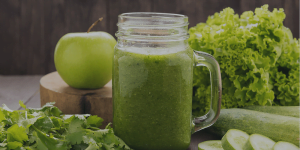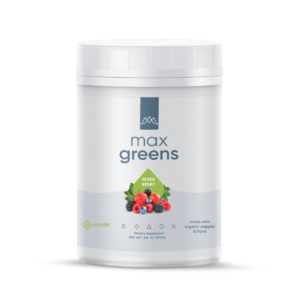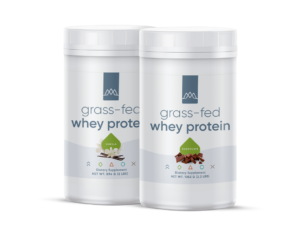Juicing has become a $2 billion industry thanks to an increased focus on healthier eating and living. Once a staple mostly among health nuts, green juices have gone mainstream today.
“Green juice is everywhere, and it’s become so synonymous with health that many of my clients think they’re doing something wrong if they’re NOT gulping it down each day,” says Cynthia Sass, RD.
Green juices provide a convenient alternative to get the many health benefits of eating fruit and vegetables daily without preparation, cooking, and other potential hassles that whole produce can create.
“Homemade, freshly squeezed juices are vitamin powerhouses,” says Jonny Bowden, Ph.D., in The 150 Healthiest Foods on Earth. “Yes, they contain some natural sugar, but you can also modify that by intelligent mixing of low-sugar vegetables (which should constitute the bulk of the ingredients) and some carefully chosen fruits for flavor and additional nutrients. And for all but the most sugar sensitive—or diabetics—the results should be fine.”
The right green juice can help with weight loss, increase antioxidants, lower levels of inflammation, and reduce cardiovascular disease and other problems. Visit our blog on juice cleanses to learn more about the benefits of juicing.
What is Green Juice?
While it might turn out green, it doesn’t have to be. Green juice typically consists of various green vegetables (hence its name), fruit, and other ingredients. Even when you add every color of the rainbow from blueberries to beets, using mostly green vegetables will probably create a green-colored juice.
Green gives the juice a healthy aura, but they vary widely. Some are almost purely leafy and cruciferous green vegetables, while others (including packaged store brands) contain a large amount of fruit — and sugar, especially as fructose.
Store-bought juices are more convenient, but homemade is best. To make your own, use a juicer or blender to extract juice from fruits and vegetables. When turning whole vegetables and fruits into juice, you get most of their nutrients and antioxidants but strip them of dietary fiber.
How to Make Green Juice
Many health foods and grocery stores sell green juices. If you live in a big city, you might even find streetside carts that prepare fresh juices. While convenient, they can also become expensive, and you’re not always in control of the ingredients.
If you’re serious about juicing, try making your own. Choosing the right blender or juicer depends on your budget, use, and requirements. There is a wide range of machines, features and price points to choose from.
Consider how often you will make juice. If you feel like you’ll only occasionally use the machine or that it will become another kitchen device that ends up stored in your garage, opt for a less expensive model to see how committed you are.
Read online reviews and ask health-minded friends what model they prefer. One option includes “nutrient extractor” style blenders, which contain unique blades and a powerful motor to optimize nutrient extraction. Research shows nutrient extraction blenders have a more favorable glycemic impact than other extraction processes.
5 Steps to Make a Green Juice
Before committing to making green juice part of your diet and plunking down money for a juicer, consider visiting a health food store and trying a few combinations to match your preferences.
How to make green juice is simple when you follow these tips:
- Make most of your juice low-sugar vegetables (see step 1 below).
- Tweak the ingredients to taste.
- Have fun!

A Google search will yield many green juice recipes, and there are plenty of guides to make the perfect juice on Amazon. Some recipes (especially with fruit) might contain high amounts of sugar, so look for those that are mostly low-sugar fruits and vegetables. Try Dr. Erin’s Detox Green Juice recipe on our blog.
Go organic whenever possible. The Environmental Working Group (EWG) says conventional produce contains 178 pesticides, most of which will end up in your juice. Otherwise, consult the EWG’s guide for the least and most pesticide-ridden produce.
Flavor and consistency are important, so don’t be afraid to play with different combinations and see what works for you. These five steps can help you build the perfect juice.
Step 1: Choose copious varieties of these leafy greens and cruciferous vegetables
According to Greger, the more greens you can add, the better. These are the most nutrient-dense options:
- Lettuces: the darker, the better, such as romaine, green leaf, arugula, and butterhead
- Cruciferous leafy greens: kale, mustard greens, collard greens, cabbage, Brussels sprouts, cauliflower, and broccoli
- Other leafy greens: Swiss chard, spinach, and dandelion greens
- Low-sugar greens: cucumber and celery
- Low-sugar vegetables: bell peppers and tomatoes
Step 2: Add a small amount of these higher-sugar vegetables and fruits
Beets, parsnips, and carrots have more sugar but provide more flavor and nutrients. If you’re trying to lose weight or limit sugar intake, use these accordingly. Berries (strawberries, blueberries, blackberries, raspberries), avocado, and coconut are the most nutrient-dense, lowest-sugar fruits. These low-sugar fruits expand the juice’s nutrient profile and flavor without too much sugar.
Step 3: Add a little bit of medium-sugar fruits (optional)
Apples, orange, and pears contain more sugar than berries but add flavor and additional nutrients. Especially if you’re trying to lose weight, go easy on these ingredients.
Step 4: Zing it up with these ingredients
Ginger, parsley, lemon, lime, cilantro, and ginger root can give your juice a little nutrient-enhanced kick. Herbs and spices like pepper and turmeric (which contains the anti-inflammatory curcuminoid curcumin) are also great. Just remember a little of these add-ons (especially ginger and turmeric) go a long way!
Step 5: Make it a Smoothie
Adding healthy ingredients including healthy fat and protein can bulk up your juice, making it more filling as a meal alternative.
Add a scoop of Max Greens. This organic green powder combines green superfoods like organic wheatgrass, organic chlorella, immune-boosting organic reishi, and maitake mushrooms. These foods represent some of the most important whole food nutrients missing in today’s modern diet and each serving of Max Greens Powder provides a powerful punch of them. This green superfood powder is flavored with organic cocoa, making it a delicious way to boost your daily intake of antioxidants, trace minerals, and key phytonutrients.
Additionally, Greger recommends adding freshly ground flaxseeds, chia seeds, or avocado to improve satiety and slows down drinking. You’ll also better absorb the fat-soluble nutrients in your green juice with healthy fats.

Alternatively, Bowden suggests 2 tablespoons of lemon-flavored fish oil. This provides a potent dose of anti-inflammatory omega-3 fatty acids.
A scoop of protein can also make your green juice more satiating while lowering its sugar impact. Our favorite Grass-Fed Whey Protein is easy to blend and comes in delicious chocolate or vanilla.
Ice can increase consistency, and water can help dilute an overly thick juice. Consider flavored water (like lime-infused water) for added flavor. For a creamier texture, try unsweetened nut kinds of milk including almond milk. Avoid using fruit juice to dilute, as this adds extra sugar.
With these 5 steps, you have everything you need to experiment making the perfect green juice. Most of us (including our children and adolescents) aren’t meeting our fruit and vegetable allotment. Green juices make an ideal way to hit your quota.


